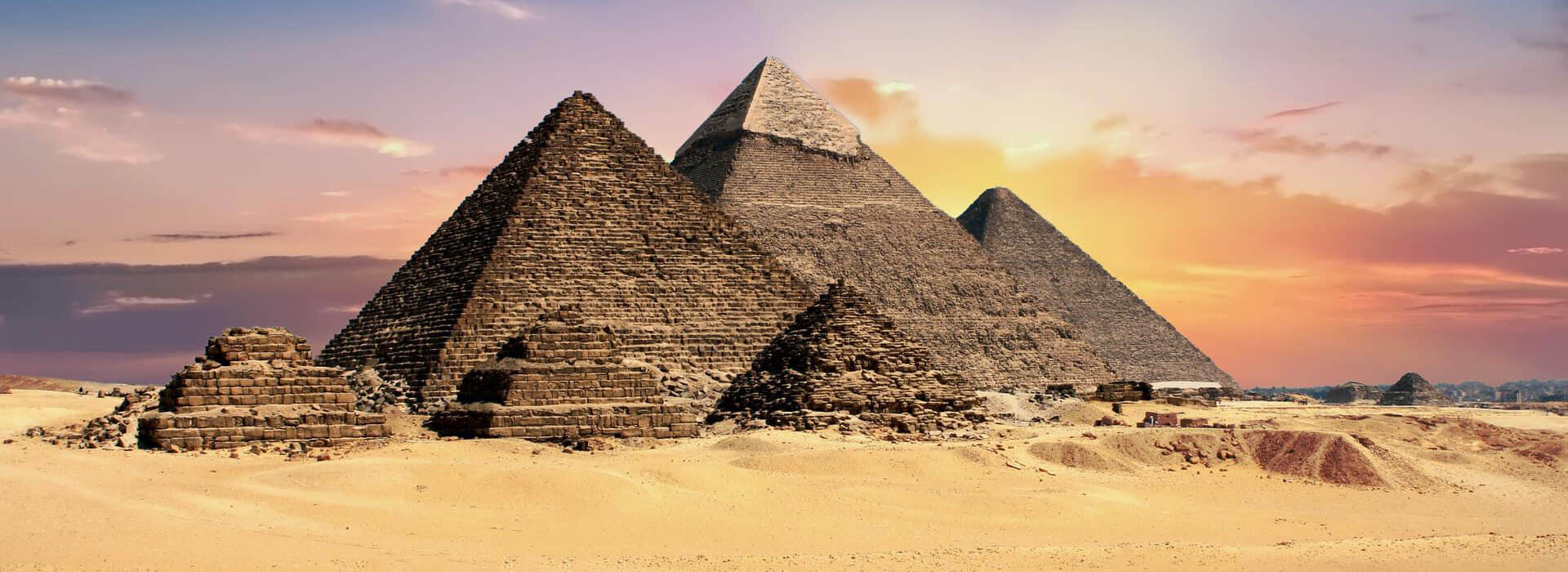5 Most Mysterious Pyramids in Egypt
Pyramids are the most iconic symbols of ancient Egypt and one of the first things we think of when we think of Egypt. The pyramids were built by the ancient Egyptians as a tomb to their Pharaohs and their queens. Built in the deserts of Egypt on the West bank of river Nile, pyramids are beautiful yet complex structures that have baffled the world. Around a 100 pyramids have been discovered by scholars until now.
People still debate over how the ancient Egyptian built such amazing monuments, some citing systems of pulleys, and immense manpower. Others claim that alien intervention is the only possible option.
Let us have a look at the 5 most mysterious Pyramids of Egypt.
No.5 Pyramid of Djoser (also spelled Zoser)

The Great Pyramid of Giza is the most remarkable structure ever built in ancient Egypt. But what many people don't know is that it's not the oldest pyramid ever built in Egypt. This title belongs to the Pyramid of Djoser, located in the ruins of Saqqara necropolis, northwest of the ruins of Memphis.
Saqqara is an ancient tomb complex about 20 miles from Giza, which was the burial place of many kings and queens in ancient times. During the Old Kingdom Era(2700–2200 BC), it was the burial place of many ancient kings and queens. Saqqara is named after an ancient Egyptian funeral deity "Saqqara". It was considered a deity overlooking this cemetery. The Pyramid of Djoser was built to house King Djoser, the founder of the Third Dynasty of Egypt during the Old Kingdom.
Originally, Djoser's body was placed in a traditional square mastaba. This is how Egypt's elites were buried before the pyramids appeared.
However, due to the importance of Djoser in that period, some of his successors thought he deserved something grander. So after the original mastaba layer, they built another mastaba on top of it to increase its height. Although this tower is slightly smaller than the original one. Later, they added more and more layers, each smaller than the other but roughly the same height. What started out as just a "Mastaba" turned into the first pyramid ever built in Egypt. This is a stepped pyramid, which is very different from a normal pyramid and easier to build. But it set a precedent for later pyramids. The kings knew that their status was now determined by how high their pyramids were. Step pyramids were later built in many parts of the world, not related to Egypt. But the ancient Egyptians are thought to predate any other kingdom or civilization.
No.4 Pyramid of Menkaure
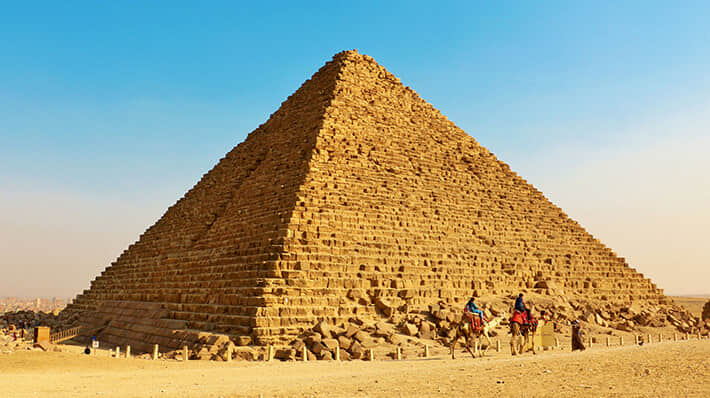
You may have never heard the name of the Pyramid of Menkaure, but you must have seen it in pictures.
This is one of the pyramids located in the Giza Pyramid Complex. The Pyramid of Menkaure is the smallest of these pyramids. Although it is not known who the pyramid was built for, the most likely candidate is the Fourth Dynasty pharaoh Menkaure, which is why the pyramid was named after him. It was completed in the 25th or 26th century BC and has a height of 65 meters. Sixty-five meters is pretty amazing for a pyramid anywhere in the world, but this height definitely pales in comparison. The sibling pyramid next to it makes it less well known to the public.
In the early 1800s, archaeologists discovered what appeared to be the burial site of Menkaure within the pyramid. They found a sarcophagus bearing his name along with human bones and other remains. While they were quick to confirm that the pyramid was his, it was later discovered that it was just a replacement coffin that had been placed in the pyramid some 1,500 years after it was built. The true origin of this pyramid may just never been revealed to us. One thing people always notice about this pyramid is its damage. On one side of the pyramid you can see very clearly, in the center of the pyramid, something hit the aftermath of the pyramid. This is because in 1196 the sultan of Egypt was so angry that the locals still worshipped certain ancient Egyptian gods on the pyramids, so he ordered it to be destroyed. They decided to start with this pyramid because it was the smallest and easiest to destroy. But it was a more challenging task than they thought. They used all the tools but couldn't demolish more than one block a day. Eventually, they called it off because it was too difficult, so they called off the destruction and banned people from the place instead.
By the way, Menkaure’s sarcophagus was placed on the British ship Beatrice that set sail from Alexandria in September of 1838. It arrived on the island of Malta and was to sail to Liverpool, England. In early October, the Beatrice encountered a storm and the ship sank somewhere in the Mediterranean Sea.
No.3 Bent Pyramid of Dahshur
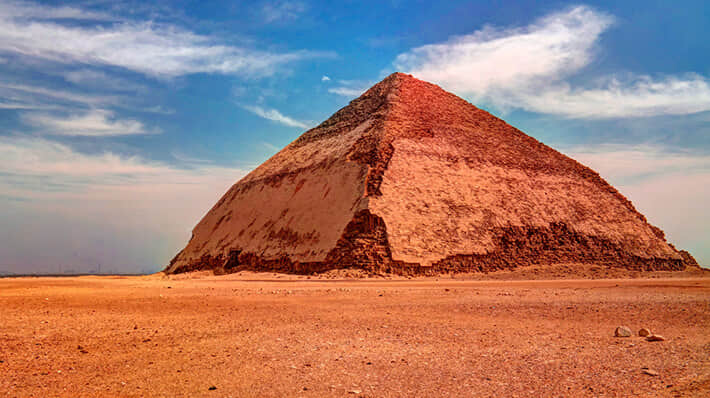
About 20 miles south of Cairo is another Egyptian royal cemetery known as Dakhsur. Dakhsur has the most pyramids outside of the Giza complex, including the Red and Black Pyramids.
There are about 5 different pyramids in Dakhsur. They are the largest, best-preserved, and best-known pyramids in the world. But perhaps the most famous pyramid to emerge from this cemetery is the Bent Pyramid. The Bent Pyramid is unlike any other pyramid on Earth. It does not follow a pyramidal structure, nor does it follow a stepped structure. Nor does it follow a ladder structure. Instead, it appears to follow this oddly curved structure. It starts out as a normal pyramid like the ones you see in Giza, but as the pyramid reaches 47 meters halfway up the mountain, it has a noticeable inward curve until it reaches the very top. Several theories about why the pyramid was made this way were prevalent in Egyptology until recently. They included the premature death of the pharaoh, requiring the speedy completion of the pyramid; or that noises coming from the interior clued the builders into the fact that the angle was not sustainable.
The height of the pyramid is about 104 meters, and it is also one of the best-preserved pyramids ever found. If you look closely, you will see that this pyramid has an almost white shell that surrounds it. It is known that all the pyramids at Giza once had such shells. This shell is made of a special limestone that glows when the sun hits it. Sunlight shines on it, making it look like a diamond in the desert.
No.2 The Great Pyramid of Giza
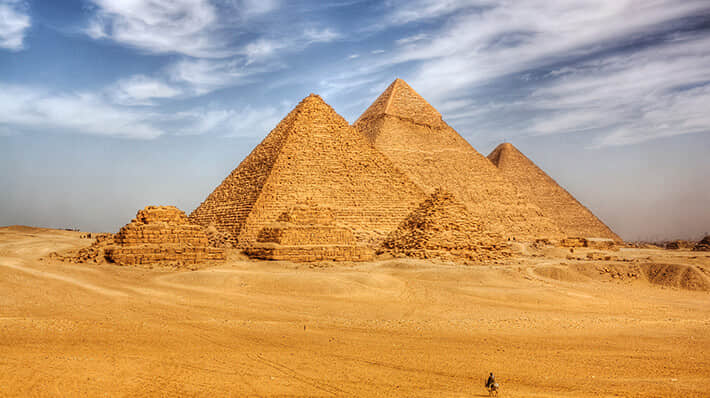
The Great Pyramid of Giza is also known as the Pyramid of Khufu because it was the final resting place of King Khufu.
It is located in the Giza necropolis, next to Cairo, which is now Egypt's largest city, although at the time, almost no one lived in the area. The Pyramid of Cheops was the first of three pyramids that would eventually be built in the complex. The first pyramid, and the iconic Sphinx, although historians can't seem to agree whether the Sphinx or the pyramids were built first. Still, it was decided that Khufu's resting place had to be something far greater than any building in the world when it was finished. And it kept the record for 2,500 years. The construction of this pyramid is an engineering marvel. Each brick weighs 2.5 tons and in total more than 2.3 million blocks were used to build it.
What's even crazier is that the building was built without any slave or forced labor. These laborers are paid workers who are treated with dignity and even receive the right to reside in city. Perhaps one of the strangest things about this pyramid is the huge empty chamber at its center. There are no corridors or pathways connected to it. The only way they could have put anything inside is if they filled the chamber while they were building the pyramid, then sealed it up afterward. We still haven’t seen the inside of the hidden chamber. But whatever is in there, Pharaoh Khufu apparently didn’t want it to ever see the light of day.
No.1 Hawara Pyramid
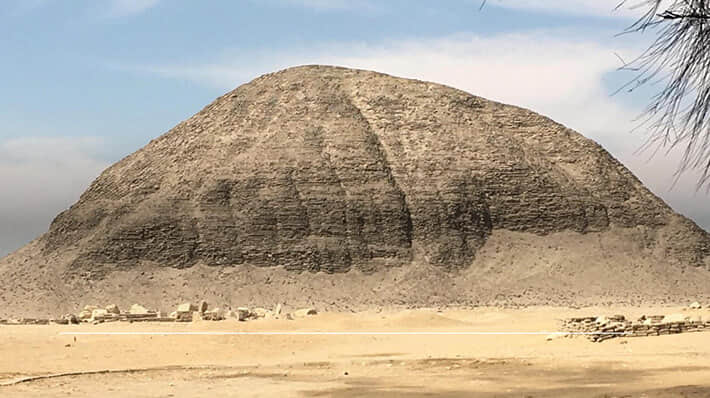
A typical everyday Jordanian food is Mujadara, a mixture of rice, lentils, and a seasoning that includes cumin. It’s something that nearly everyone knows the recipe for how to cook it at home, and it’s commonly eaten as a dish that’s quick and easy. It’s also a favorite main dish for vegetarians in Jordan as well.
